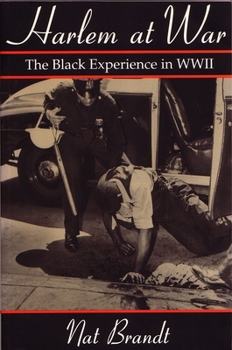Harlem at War: The Black Experience in World War II
Select Format
Select Condition 
Book Overview
By the spring of 1943 more than a half million blacks were in the U.S. Army, but only 79,000 of them were overseas. Most were repeating the experience of their fathers in World War I--serving chiefly in labor battalions.
Wherever black troops were trained or stationed, Brandt explains, "rage surfaced frequently, was suppressed, but not extinguished." Using eyewitness accounts, he describes the rage Harlem residents felt, the discrimination and humiliation they shared with blacks across the country. The collective anger erupted one day in Harlem when a young black soldier was shot by a white police officer. The riot, in which six blacks were killed, seven hundred injured, and six hundred arrested, became a turning point in America's race relations and a precursor to the civil rights struggle of the 1960s.Format:Hardcover
Language:English
ISBN:081560324X
ISBN13:9780815603245
Release Date:February 1996
Publisher:Syracuse University Press
Length:294 Pages
Weight:1.35 lbs.
Dimensions:0.9" x 6.3" x 9.3"
Related Subjects
Africa African-American Studies Americas Asia Biographical Biographies Biographies & History Biography & History Discrimination & Racism Education & Reference Europe History Leaders & Notable People Military Modern (16th-21st Centuries) Politics & Social Sciences Race Relations Social Science Social Sciences Specific Demographics State & Local World War IICustomer Reviews
0 rating





